March 19 2010
The past two weeks have been busy ones. I spoke with Jim Calloway about the possibility of digitally recording some of the photographs in the collection-- in order that they may be preserved. Jim seemed to favor the idea.
March 8,
On March 8th I found still more fascinating items in the GPBHM Archives. I jotted down some of the items here.
There was a box entitled "Photo's of People." Inside was a copy of a photo of Ava Speese and family (African American homesteaders). This box differs from other's as it seems to contain photos which relate back to other series in the collection. I decided to place it in the Local History section (rather than in the photograph collection). When we begin arranging the collection, a decision will have to be made about whether or not to move these items back into the series to which they relate. Today, I also got to explore the Dan Des Dunes Band Box, which includes photo's of the band, singers, sheet music and more. This box includes a handwritten container list. I have discovered lists in some of the other boxes as well. They are often tucked away inside of one of the folders. . . Today I also found a box of Administrative materials including conference presentation drafts written by the collection's original curator Mrs. Bertha Calloway. Here too, are documents relating to one of Mrs. Calloway's programs--Ms. Black Nebraska. There are directions to judges, communication with contestants, programs, and pictures of young black women (some in bathing suits). I recall the pageants, and remember Ms. Calloway's emphasis on the beauty of all women. She hoped that the event would help to heal those who were "color-struck" by light or white skin --which is nothing--I clearly recall her saying-- but a remnant from slavery.
More administrative items included correspondence, and a negative of Mrs. Calloway in front of the Museum back in its heyday. . . Other finds: Boxes on "African Americans in Early Nebraska History;" two boxes of materials from the Black Studies Department; the records of Alonzo Smith--former Chair of the UNO Black Studies Department. Ms. Calloway and Dr. Smith once wrote a book together. Here we find Oral History Project II transcripts.
The richness of the holdings deepen with each box that I open. Here are items on local musicians from the 1950s. Basie Givens' "Basie Bombadiers" are photographed, as is Earl Graves Orchestra [c. 1957]. Next is a box on Pioneers and Homesteaders (some of these from Alliance and Hall Counties). Names of homesteaders include: John Bridewell, Harriet Green, Ollie Walker, Hester and Charles Meehan (interracial couple), Myra Kincaid and others.
The next box contains a Negro Business Directory for Omaha from 1941. Here is a box on the Black Church with a handwritten history [c. 1939]of St. John's AME in Omaha. There are more boxes to add to the ever growing Dixon Family collection. A wonderful item inside is a file on the Women (s) Christian Temperance Union. . . I will not be able to describe every box, but my appreciation for this collection of materials is great.
March 12
Another great day! I will try to simply list the box titles without going into so much detail--since the container list is forthcoming. I have taken notes today on boxes containing items about:
Schools; African Americans in Radio and Television; African Americans in Nebraska; the Urban Action Association, the Missouri Vally Historical Society, Camp Brewster, African American Masonry, Black Newspapers, Ms. Flora Pinkston (music/piano teacher).
March 15,
I continued shifting boxes into shelves. The Local History collection is the largest, but the Family Histories are close behind. Today studied photographs from a series on the KKK, there was also material on Midwestern artists, the NAACP, and the North Branch YWCA--whose former home, I learned today, was at 23rd and Lake Streets, in the very building that later became the home of the Great Plains Black History Museum.
Friday, March 19, 2010
Tuesday, March 9, 2010
by T. A. Johnson
March 1
Today I found a brochure from the Stone Soul Picnic. I remember attending the annual event at Carter Lake, Iowa (right across the river from Omaha) when I was a child, and then as a teenager, and eventually as a young wife. I had heard that Ms. Calloway was involved in the planning each year, but I am gradually getting the idea that she may have been the driving force. In graduate school and while interviewing local Nebraska families, I began to understand these annual spring or mid-summer picnics as cultural events. They, in fact, are a time for the entire African American community to come together on holiday. There is always music—the best of classic R &B, Jazz, and some live performances. Families pitch tents or campers around the lake and spend 1-4 days camping, eating, and socializing with their neighbors. It may be a regional affair, I am not sure, but it certainly has something in common with the Native American Pow Wow. Not infrequently, there is an overlapping of the Stone Soul Picnic and Pow Wow’s and some participation in the picnic by individuals who have membership in or relatives in the Omaha, Winnebago and other Local tribes. A small African American presence is also a regular occurance at the Pow Wow’s .
Other items which brought back memories included a file on BLAC, Black Liberators for Action on Campus a student group at the University of Nebraska at Omaha. I was actually a member of this group back in 1983. Our main focus was to advocate for the end of Apartheid in South Africa.
I also found today a series of reports entitled Community Resource Index (1970). Inside there are scores of brief biographies of African Americans in Omaha. It is a delightful find for anyone interested in Omaha history.
I noted something about the apparent organization of the collection today and felt momentarily confused. It seems there are frequently two or more boxes with the same subject heading, but the materials inside have been collected for different purposes. For example: There are at least two boxes labeled “Cowboys.” The materials inside of box one are what I am now calling “type one” material. Type one materials document the early cattlemen here in Nebraska, via correspondence, bills of sale for cattle, diaries, and photographs, for example. The other box labeled “Cowboys” is what I am now dubbing “type two,” materials. Type two items are primarily educational material (secondary source items) geared toward display, or gathered for the purpose of teaching about the topic. I discussed this with Tom Mooney, Curator of Manuscripts for the State of Nebraska, and he said that this was not unusual for a museum. Mr. Calloway had already given me a copy of the principles and collections policy of the NSHS (available on-line but which I had never looked for), and indeed they have a separate division for educational materials.
March 3,
On Wednesday I traveled (50 mi.) to Omaha and visited the Love Jazz Center and my friend Neville Murray who is the Curator, and Executive Director there. The institution is five years old but I had my first tour. I felt revived by all of the culture. There are hundreds of paintings, and photographs of African and African American people. The art has reproduced life in action: people working, dancing, riding bicycles, resting, struggling, socializing, going to church and protesting. The collection is amazing and its artistic level so high that I felt inspired to get my clay out and begin to work on my own art. At the end of the visit, Neville said that If Mr. Calloway would like to have a room or part of a room to work on setting up display items for the museum, he would be welcome to bring them to the Love Jazz Center. I hope that Mr. Calloway and the GPBHM Board of Directors will consider this offer, for the spot is in the heart of North Omaha, less than a block from whether the GPBHM stands.
March 5
I was invited to join Mr. Calloway and others at the Museum site this afternoon, as the heritage foundation was coming to view the building and was considering providing funds for its repair. I did not attend the meeting as I was scheduled to work in the archives. I later learned that the tour and discussion went well.
Today I discovered a method for temporarily containing mold. Whenever I feel the need to transfer items to a new box or folder due to mold (either on the outside or on the outer edges) I disrupt the mold by scrubbing with a paper towel or cloth until I interrupt the patterned growth. I think this may retard the advance of the mold and may give us a few months leeway—until we can secure the needed archival supplies.
This was truly and inspirational day for me as both a historian and as a budding archivist. My notes are extensive, but I will try to summarize them here.
One box on African American Art contains information on the Eure family of Omaha, and inside is a signed letter from the late actor Ossie Davis. I also was delighted to find a file on Alternative Black Newspapers. I had come across a single issue of Black Realties while working on the Chambers Collection, but the entire paper was not there. Now I learn that Chambers, and David Rice, as well as Carl Allison, Alfred Thomas, and others wrote for the paper. I also learned that the publication was circulated by Wesley House. All of this helps me to reconstruct North Omaha politically, in the late 1960’s –early 1970’s.
Understanding the Collection
More important for the GPBHM Project is that I have finally found a system for the initial sorting of these boxes. I place five boxes at a time on the work cart, identify the primary contents, and place them in one of the emerging Subgroups: Family History; Local Histories; Administration; Racial Issues and Civil Rights; Institutional Histories (African American, or Integrated), and Topic Research. There is also a Library Collection (including books, journals, popular magazines, and newspapers and newspaper clippings), and a Photograph Collection.
(By now I have discovered the color of the boxes has no bearing, I am not yet sure about the numbering system. My guess is that the numbers refer not to contents, but to the order in which the item entered the collection).
It is perhaps obvious, that Local Histories and Civil Rights are not mutually exclusive subjects. Rather, this artificial division is a means of separating out local histories which are focused on the Masons, African American Art, Church, and other categories from Civil Rights. The reason for this is a practical one, namely, the extensive size of the Racial and Civil Rights papers seem to demand their own internal arrangement, and because the topic includes additional papers tying local events to the National Civil Rights movement, this temporary arrangement seems logical.
I am beginning to get an Idea of the scope of the collection. Contained here is a box on African Americans in Iowa and South Dakota. One file includes correspondence of the Iowa Federation of Colored Women’s Clubs and their maintenance of a home for young women at Iowa City. One letter details the exclusion of African American girls from a similar institution run by white women.
Other interesting aspects of my work today include a photo of the Patton Hotel, which was run by and for African Americans—barred from the downtown hotels in Omaha. There is an excellent series here on the De Porres Club; and documentation of the social activism which emanated from its gatherings. In the Clubs and Organizations Box, a program from the Seventh Annual Clubs on Parade event relays information on the histories and memberships of many of Omaha’s African American clubs; popular in the 1940s and 1950s. These include: the Rattlers; Beau Brummel (which met at the home of the Urban League on Lake Street); the Serveretts, and the La Flores among others.
March 8, 2010
Mr. Calloway sat in while I worked today. He answered questions for me about a reference to “road shows”; clarified what he wished to do with framed pictures (keep them in frames until funds were available to reframe them); and directed me to throw out the unsolicited publications (catalogs and advertisements) which were in one box of the papers.
Practicum Blog GPBHM Collection
(T.A. Johnson)
February 16, 2010
One week ago, I met Mr. Jim Calloway at the Douglas County Historical Society. There we discussed the possibility of moving the Great Plains Black History Museum’s archival collection from the storage facility (on the lot of the Great Plains Black History Museum in Omaha) into the DCHS on temporary loan. Their lead archivist and Dr. Dennis Mihelich, a board member, attended the meeting. Both felt that they needed to view the collection before making any commitments, in order to determine its condition. The DCHS representatives also expressed uncertainty about whether they could take the collection on a temporary basis. Mr. Calloway decided to open the storage bin over weekend so that the contents could be viewed. On Saturday, staff from the Douglas County Historical Society viewed the contents, along with myself, and two representatives from the Nebraska State Historical Society. After long deliberation, and an offer to place the archival collection at the NSHS for a period of one year for safekeeping in dry conditions, and with the GPBHM retaining full title to the collection, Mr. Calloway decided to place the archives in with the NSHS in Lincoln.
Today, State Archivist Andrea Faling, and Curator of Manuscripts for the NSHS Tom Mooney, myself, and Mr. Calloway loaded onto a truck and transferred the paper portion of the collection to Lincoln. The primary reason for the move was that the materials were beginning to erode. The collection had been stored outside for a number of years due to damage to the roof of the museum. Some of the boxes were tingeing green with mold and a few photos looked to be deteriorating. It is hoped that funding, and or collaborations can be sought to help reconstruct a permanent home for the collection. After the move, Mr. Calloway and I went to see his mother, Bertha Calloway, the curator of the museum for nearly four decades, at the nursing home.
February 22, 2010
I met with Mr. Calloway at a local cafeteria, and we discussed the future of the collection for a couple of hours.
February 23, 2010
Mr. Calloway joined me for a tour of the Nebraska State Historical Society. He wanted to see where the papers are being stored, as well as the place where I will process them. The NSHS is undergoing renovations and we happened to arrive on moving day. Staff members were relocating their offices from one side of the building to another. It is easy to tell that many aspects of the facility have been updated. I think that we were both impressed, and Mr. Calloway inquired about the cost of the project.
February 26 Day 1
Today is Friday. It is my first opportunity to work with the papers. When I arrived at the NSHS I saw that Tom and Andrea had created an office for me. I have a desk, and a computer. I was surprised and very pleased. I spent some time going over a box of photographs. At length I described them. Most will remain in frames unless Mr. Calloway decides that he wants them removed. Most of the people in the photos are not identified (we may find out more when and if we look at the backs of the pictures). The photos included a picture of Omahans celebrating the Masonic festival St. John’s Day. There was also a picture of the locally famous Dan Des Dunes Band, a baby in buggy, and African Americans in early model cars (c. 1918-1930).
At length, I tried to survey the collection more generally. Many of the boxes are numbered and with labels on the outside. I tried to determine whether the labels matched the contents, but found cases where they did as well as cases where they did not. I also tried to organize a couple of boxes by number, and alternatively by color, to see if there were any correlation between those factors and the contents (i.e. associations of material between boxes according to some system). At last I noted that several categories of material emerged. At present I have found that there are: family collections; histories of integrated institutions in Nebraska, local history including a) church history, b) early African American schools, c) homesteaders, d) cowboys, e) and masons. There are also administrative papers, photograph collections (as well as photos in the topical collections), and a biographical collection of the Calloway family. The work was extremely interesting and the collection’s depths I have not yet been able to ascertain as I have only perused 10 or 15 of 180 boxes.
March 1
Today I found a brochure from the Stone Soul Picnic. I remember attending the annual event at Carter Lake, Iowa (right across the river from Omaha) when I was a child, and then as a teenager, and eventually as a young wife. I had heard that Ms. Calloway was involved in the planning each year, but I am gradually getting the idea that she may have been the driving force. In graduate school and while interviewing local Nebraska families, I began to understand these annual spring or mid-summer picnics as cultural events. They, in fact, are a time for the entire African American community to come together on holiday. There is always music—the best of classic R &B, Jazz, and some live performances. Families pitch tents or campers around the lake and spend 1-4 days camping, eating, and socializing with their neighbors. It may be a regional affair, I am not sure, but it certainly has something in common with the Native American Pow Wow. Not infrequently, there is an overlapping of the Stone Soul Picnic and Pow Wow’s and some participation in the picnic by individuals who have membership in or relatives in the Omaha, Winnebago and other Local tribes. A small African American presence is also a regular occurance at the Pow Wow’s .
Other items which brought back memories included a file on BLAC, Black Liberators for Action on Campus a student group at the University of Nebraska at Omaha. I was actually a member of this group back in 1983. Our main focus was to advocate for the end of Apartheid in South Africa.
I also found today a series of reports entitled Community Resource Index (1970). Inside there are scores of brief biographies of African Americans in Omaha. It is a delightful find for anyone interested in Omaha history.
I noted something about the apparent organization of the collection today and felt momentarily confused. It seems there are frequently two or more boxes with the same subject heading, but the materials inside have been collected for different purposes. For example: There are at least two boxes labeled “Cowboys.” The materials inside of box one are what I am now calling “type one” material. Type one materials document the early cattlemen here in Nebraska, via correspondence, bills of sale for cattle, diaries, and photographs, for example. The other box labeled “Cowboys” is what I am now dubbing “type two,” materials. Type two items are primarily educational material (secondary source items) geared toward display, or gathered for the purpose of teaching about the topic. I discussed this with Tom Mooney, Curator of Manuscripts for the State of Nebraska, and he said that this was not unusual for a museum. Mr. Calloway had already given me a copy of the principles and collections policy of the NSHS (available on-line but which I had never looked for), and indeed they have a separate division for educational materials.
March 3,
On Wednesday I traveled (50 mi.) to Omaha and visited the Love Jazz Center and my friend Neville Murray who is the Curator, and Executive Director there. The institution is five years old but I had my first tour. I felt revived by all of the culture. There are hundreds of paintings, and photographs of African and African American people. The art has reproduced life in action: people working, dancing, riding bicycles, resting, struggling, socializing, going to church and protesting. The collection is amazing and its artistic level so high that I felt inspired to get my clay out and begin to work on my own art. At the end of the visit, Neville said that If Mr. Calloway would like to have a room or part of a room to work on setting up display items for the museum, he would be welcome to bring them to the Love Jazz Center. I hope that Mr. Calloway and the GPBHM Board of Directors will consider this offer, for the spot is in the heart of North Omaha, less than a block from whether the GPBHM stands.
March 5
I was invited to join Mr. Calloway and others at the Museum site this afternoon, as the heritage foundation was coming to view the building and was considering providing funds for its repair. I did not attend the meeting as I was scheduled to work in the archives. I later learned that the tour and discussion went well.
Today I discovered a method for temporarily containing mold. Whenever I feel the need to transfer items to a new box or folder due to mold (either on the outside or on the outer edges) I disrupt the mold by scrubbing with a paper towel or cloth until I interrupt the patterned growth. I think this may retard the advance of the mold and may give us a few months leeway—until we can secure the needed archival supplies.
This was truly and inspirational day for me as both a historian and as a budding archivist. My notes are extensive, but I will try to summarize them here.
One box on African American Art contains information on the Eure family of Omaha, and inside is a signed letter from the late actor Ossie Davis. I also was delighted to find a file on Alternative Black Newspapers. I had come across a single issue of Black Realties while working on the Chambers Collection, but the entire paper was not there. Now I learn that Chambers, and David Rice, as well as Carl Allison, Alfred Thomas, and others wrote for the paper. I also learned that the publication was circulated by Wesley House. All of this helps me to reconstruct North Omaha politically, in the late 1960’s –early 1970’s.
Understanding the Collection
More important for the GPBHM Project is that I have finally found a system for the initial sorting of these boxes. I place five boxes at a time on the work cart, identify the primary contents, and place them in one of the emerging Subgroups: Family History; Local Histories; Administration; Racial Issues and Civil Rights; Institutional Histories (African American, or Integrated), and Topic Research. There is also a Library Collection (including books, journals, popular magazines, and newspapers and newspaper clippings), and a Photograph Collection.
(By now I have discovered the color of the boxes has no bearing, I am not yet sure about the numbering system. My guess is that the numbers refer not to contents, but to the order in which the item entered the collection).
It is perhaps obvious, that Local Histories and Civil Rights are not mutually exclusive subjects. Rather, this artificial division is a means of separating out local histories which are focused on the Masons, African American Art, Church, and other categories from Civil Rights. The reason for this is a practical one, namely, the extensive size of the Racial and Civil Rights papers seem to demand their own internal arrangement, and because the topic includes additional papers tying local events to the National Civil Rights movement, this temporary arrangement seems logical.
I am beginning to get an Idea of the scope of the collection. Contained here is a box on African Americans in Iowa and South Dakota. One file includes correspondence of the Iowa Federation of Colored Women’s Clubs and their maintenance of a home for young women at Iowa City. One letter details the exclusion of African American girls from a similar institution run by white women.
Other interesting aspects of my work today include a photo of the Patton Hotel, which was run by and for African Americans—barred from the downtown hotels in Omaha. There is an excellent series here on the De Porres Club; and documentation of the social activism which emanated from its gatherings. In the Clubs and Organizations Box, a program from the Seventh Annual Clubs on Parade event relays information on the histories and memberships of many of Omaha’s African American clubs; popular in the 1940s and 1950s. These include: the Rattlers; Beau Brummel (which met at the home of the Urban League on Lake Street); the Serveretts, and the La Flores among others.
March 8, 2010
Mr. Calloway sat in while I worked today. He answered questions for me about a reference to “road shows”; clarified what he wished to do with framed pictures (keep them in frames until funds were available to reframe them); and directed me to throw out the unsolicited publications (catalogs and advertisements) which were in one box of the papers.
Practicum Blog GPBHM Collection
(T.A. Johnson)
February 16, 2010
One week ago, I met Mr. Jim Calloway at the Douglas County Historical Society. There we discussed the possibility of moving the Great Plains Black History Museum’s archival collection from the storage facility (on the lot of the Great Plains Black History Museum in Omaha) into the DCHS on temporary loan. Their lead archivist and Dr. Dennis Mihelich, a board member, attended the meeting. Both felt that they needed to view the collection before making any commitments, in order to determine its condition. The DCHS representatives also expressed uncertainty about whether they could take the collection on a temporary basis. Mr. Calloway decided to open the storage bin over weekend so that the contents could be viewed. On Saturday, staff from the Douglas County Historical Society viewed the contents, along with myself, and two representatives from the Nebraska State Historical Society. After long deliberation, and an offer to place the archival collection at the NSHS for a period of one year for safekeeping in dry conditions, and with the GPBHM retaining full title to the collection, Mr. Calloway decided to place the archives in with the NSHS in Lincoln.
Today, State Archivist Andrea Faling, and Curator of Manuscripts for the NSHS Tom Mooney, myself, and Mr. Calloway loaded onto a truck and transferred the paper portion of the collection to Lincoln. The primary reason for the move was that the materials were beginning to erode. The collection had been stored outside for a number of years due to damage to the roof of the museum. Some of the boxes were tingeing green with mold and a few photos looked to be deteriorating. It is hoped that funding, and or collaborations can be sought to help reconstruct a permanent home for the collection. After the move, Mr. Calloway and I went to see his mother, Bertha Calloway, the curator of the museum for nearly four decades, at the nursing home.
February 22, 2010
I met with Mr. Calloway at a local cafeteria, and we discussed the future of the collection for a couple of hours.
February 23, 2010
Mr. Calloway joined me for a tour of the Nebraska State Historical Society. He wanted to see where the papers are being stored, as well as the place where I will process them. The NSHS is undergoing renovations and we happened to arrive on moving day. Staff members were relocating their offices from one side of the building to another. It is easy to tell that many aspects of the facility have been updated. I think that we were both impressed, and Mr. Calloway inquired about the cost of the project.
February 26 Day 1
Today is Friday. It is my first opportunity to work with the papers. When I arrived at the NSHS I saw that Tom and Andrea had created an office for me. I have a desk, and a computer. I was surprised and very pleased. I spent some time going over a box of photographs. At length I described them. Most will remain in frames unless Mr. Calloway decides that he wants them removed. Most of the people in the photos are not identified (we may find out more when and if we look at the backs of the pictures). The photos included a picture of Omahans celebrating the Masonic festival St. John’s Day. There was also a picture of the locally famous Dan Des Dunes Band, a baby in buggy, and African Americans in early model cars (c. 1918-1930).
At length, I tried to survey the collection more generally. Many of the boxes are numbered and with labels on the outside. I tried to determine whether the labels matched the contents, but found cases where they did as well as cases where they did not. I also tried to organize a couple of boxes by number, and alternatively by color, to see if there were any correlation between those factors and the contents (i.e. associations of material between boxes according to some system). At last I noted that several categories of material emerged. At present I have found that there are: family collections; histories of integrated institutions in Nebraska, local history including a) church history, b) early African American schools, c) homesteaders, d) cowboys, e) and masons. There are also administrative papers, photograph collections (as well as photos in the topical collections), and a biographical collection of the Calloway family. The work was extremely interesting and the collection’s depths I have not yet been able to ascertain as I have only perused 10 or 15 of 180 boxes.
Subscribe to:
Posts (Atom)

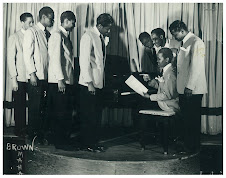
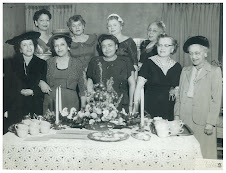
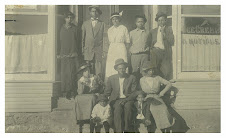
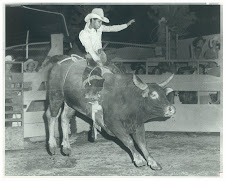


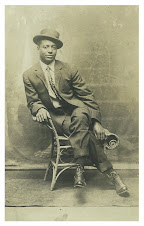
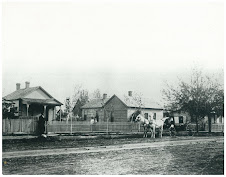.jpg)

